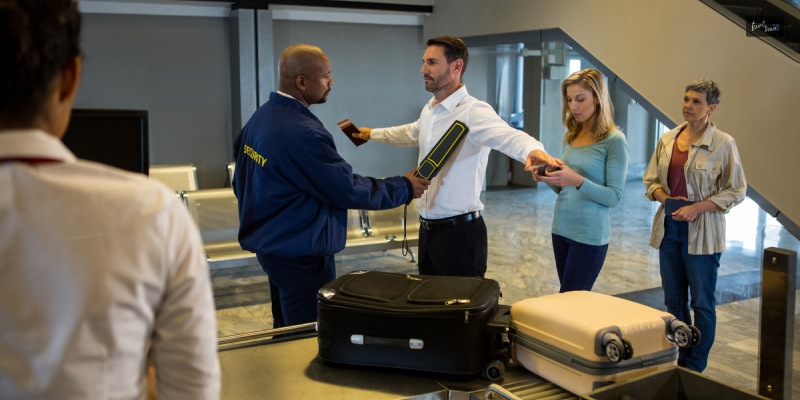The Essential Corporate Travel Tools Every Business Needs
BY Ankita Mar 19, 2024
The current globalized business landscape is different from the previous one. Corporate travel is prioritized in organizations more than anything else. Whether it is for meetings, conferences, or business development opportunities, companies are constantly sending their employees across the world to build connections and expand their businesses. However, managing corporate travel can be a challenging and complex task. Thankfully, there are several tools available that can streamline the process and make business travel more efficient and hassle-free.In addition to streamlining the corporate travel process, these tools also play a crucial role in cost management and policy compliance. By providing real-time data and analytics, businesses can track their travel expenses, identify cost-saving opportunities, and ensure compliance with travel policies. These tools allow companies to set budgets, monitor spending, and enforce travel policy guidelines, ultimately resulting in better control over travel expenditures. In this blog, you will explore the essential corporate travel tool that every business needs. 1. Travel Management Platforms A travel management platform is an all-in-one corporate travel tool that allows businesses to manage their corporate travel program. Such a corporate travel agency provides a centralized platform to book flights, hotels, ground transportation, and other travel-related services. With real-time travel data and analytics, businesses can make informed decisions and optimize travel costs. Further, they can also ensure the safety and well-being of their employees on the road. 2. Booking Platforms Booking platforms are an essential corporate travel tool for securing flights, hotels, and other travel arrangements. Such a corporate travel agency allows businesses to compare prices, book tickets, and manage itineraries all in one place. They often offer exclusive rates and discounts for corporate travelers, saving companies both time and money. A corporate booking platform offers a wide array of travel booking options along with collaborative spaces and top-rated housing. 3. Mobile Apps Mobile apps are a game-changing corporate travel tool. With the rise of smartphones, it has become increasingly important to have access to travel information on the go. Mobile apps allow travelers to check flight status, manage bookings, receive real-time notifications, and access important travel documents easily. They provide a seamless travel experience and help employees stay connected and productive while on the road. User-friendly mobile apps make it easier for people coming from all walks of life to travel a seamless journey. 4. Travel Risk Management Tools Ensuring the safety and well-being of employees is a top priority for any business during corporate travel. Travel risk management tools provide crucial information and assistance in case of emergencies or unforeseen events. These tools help businesses track the location of their employees, provide real-time travel advisories, and offer assistance for medical emergencies or security threats. 5. Expense Management Tools Expense management is a crucial aspect of corporate travel, and managing receipts and expense reports can be a tedious task. Corporate travel tools simplify this process by allowing employees to capture and submit expenses easily and automate the reimbursement process. These tools ensure compliance with travel policies and allow for better control over travel expenses. Other popular features included in expense management tools are invoice scanning, accounting software integration, and automated expense reports. 6. Collaboration And Communication Tools Effective communication and collaboration are essential for successful corporate travel. Collaboration tools help teams stay connected, share files, and collaborate on projects even when they are on the road. Communication tools enable employees to stay connected with their teams and keep in touch with clients and partners, irrespective of location or time zone. Corporate communication tools offer industries a comprehensive platform that helps in planning travel efficiently. 7. Travel Insurance Travel insurance is often an overlooked aspect of corporate travel, but it is crucial for providing financial protection and peace of mind. Travel insurance policies cover medical emergencies, trip cancellations, flight delays, lost baggage, and other unforeseen events. Having comprehensive travel insurance ensures that employees are well taken care of in case of any unexpected incidents during their travels. 8. Travel Itinerary Management Tools Managing travel itineraries can be challenging, especially when employees have multiple trips and complex schedules. Travel itinerary management tools help businesses organize and manage travel itineraries for their employees. These tools allow companies to create, share, and update itineraries, including flights, hotels, meetings, and other activities, in one centralized platform. This ensures that employees have all the necessary information at their fingertips, making their travel experience smoother and more organized. 9. Travel Expense Tracking Tools Tracking and managing travel expenses is a crucial corporate travel tool for businesses to control costs and ensure compliance with travel policies. Travel expense tracking tools help companies monitor and analyze travel expenses in real-time. These tools automate the expense tracking process, enabling employees to capture expenses on the go and categorize them according to travel policies. This not only saves time but also helps businesses identify cost-saving opportunities and improve expense control. 10. Travel Loyalty Programs Travel loyalty programs can benefit both businesses and employees. By enrolling in airline and hotel loyalty programs, businesses can earn points, receive exclusive discounts, and access premium services. Employees can also enjoy personal benefits like room upgrades and priority boarding. Travel loyalty programs help businesses save money on travel expenses and enhance employee satisfaction. Popular travel loyalty programs include airline programs like United MileagePlus and hotel programs like Marriott Bonvoy. Businesses need to encourage employees to enroll in these programs and utilize the benefits offered. Final Thoughts Corporate travel can be made more efficient and organized with the help of these essential travel tools and services. From travel management platforms to collaboration tools, expense management solutions, and travel insurance, these tools cater to various aspects of corporate travel. By leveraging such a corporate travel agency, businesses can optimize their corporate travel program, provide a seamless travel experience to employees, and ensure the success of their business ventures around the world. So, that’s all about it! Keep following us for more such content and do share your comments below. Read Also: How To Apply For A Passport Online In This Pandemic, And Which Countries Allow You To Travel Now?
















